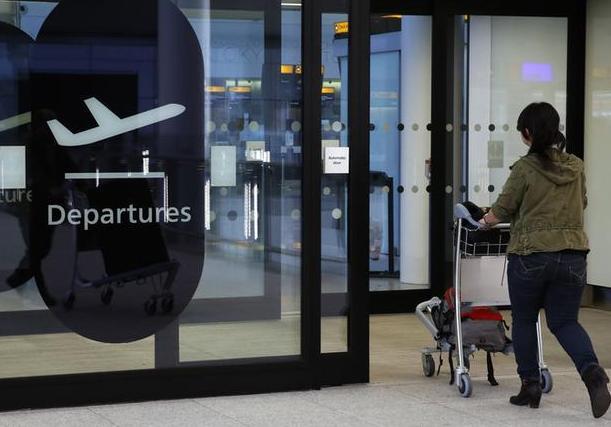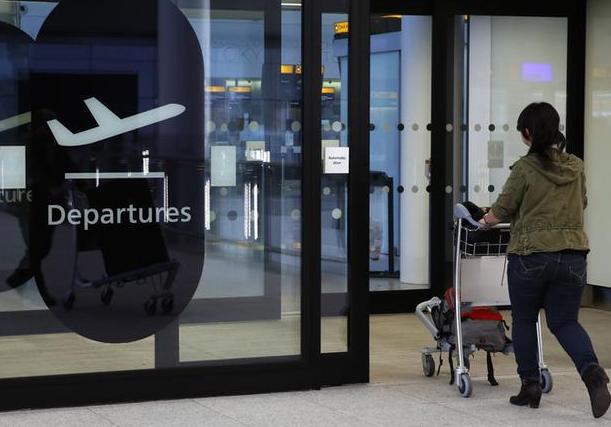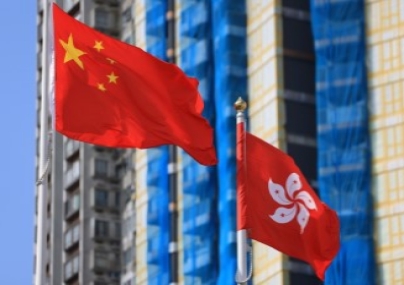
“When ‘Abenomics’ started, I was slightly worried about the weakening of the Japanese yen. I thought some Japanese companies might lose their appetite to go overseas. But this was not the case. It turns out that it was inevitable for Japanese companies to go overseas, regardless of the movement of the yen,” notes Jiro Toyokawa, a partner at Baker & McKenzie (Gaikokuho Joint Enterprise) in Tokyo. Indeed, Japan’s slow domestic growth after the devastating 2011 tsunami, coupled with declining birth rates and an ageing society, have left Japanese companies with no other option but to venture overseas. Recent figures indicate that Japan Inc is on the road to recovery, with an uptick in outbound acquisitions across a range of sectors from consumer and retail to finance and electronics. According to Thomson Reuters data, Japanese outbound activity for the first half of 2014 recorded a total of $33.6 billion in deal value, the highest first half deal value for outbound deals in the last three years and more than twice the $15.2 billion in deal value recorded during the same period in 2013. Importantly, market watchers say, it is not only the top-tier Japanese companies that are expanding abroad, but also an increasing number of medium-sized companies that are eager to venture overseas for the first time.
Back to topA shift westward?
Japan’s mega banks and government agencies are also awash with cash and willing to lend to support Japan Inc’s outbound drive. In January, Japanese beverage group Suntory Holdings agreed to purchase U.S. spirits company Beam Inc for $16 billion, using about $14 billion in borrowed money.
The state-owned Japan Bank for International Cooperation (JBIC), which provides financial resources to domestic firms expanding abroad, is looking to boost its support for Japanese firms in overseas M&A deals. The bank, which has traditionally focused on infrastructure and energy investments, made loans, guarantees and investments worth 15.3 trillion yen ($149.93 billion) last year, Reuters reports. Japan has three other entities that provide capital to Japanese companies – the Innovation Network Corporation of Japan (INCJ), the Regional Economy Vitalization Corporation of Japan (REVIC) and a fund managed by the state-owned Development Bank of Japan (DBJ). “We have seen several transactions where these state-owned banks and corporations and Japanese companies jointly conduct outbound M&A transactions,” says Toyokawa, adding that Japanese building products group Lixil used funding from DBJ on its $4 billion acquisition of Grohe, a German bathroom instalments maker, last September.
An important aspect of the recent Japanese outbound M&A boom is a notable shift from mid-sized deals in Asia to big-ticket transactions in the U.S. and Europe, lawyers say. In addition to the sale of Grohe to Lixil, Japanese companies have conducted a number of mega deals in the West, including Suntory Holdings’ $16 billion acquisition of Beam Inc in January, Dai-ichi Life Insurance Co’s $5.7 billion purchase of American insurer Protective Life in June, and SoftBank’s $20 billion acquisition of Sprint Nextel in 2012 in what is the largest ever Japanese outbound M&A transaction to date. “For the last few years, Japanese companies have been focusing on Southeast Asia because the region’s geographic proximity to Japan makes it convenient for them to expand their businesses,” says Toyokawa. But finding sizeable targets in developing countries is no easy task. “As a result, following some successful mid-sized acquisitions in the Asian market, more Japanese companies are now willing to go further to acquire bigger targets in developed regions like the U.S. and Europe,” says Toyokawa, who led the Baker & McKenzie team that advised Dai-ichi Life Insurance on its acquisition of Protective Life. “The Dai-ichi transaction is typical of this trend. The company has done several transactions in Asia, and is now looking to penetrate a much bigger market like the United States,” he says.
Back to topA focus on Southeast Asia
But while big-ticket deals like SoftBank’s acquisition of Sprint are eye-catching, they are somewhat uncommon, says Hisashi Hara, head partner of Nagashima Ohno & Tsunematsu’s Singapore office. On the other hand, acquiring Asian companies is more of a routine for Japanese companies, claims Hara. “One good indicator is that the Singapore office of three Japanese mega banks and five big Japanese trading companies are now bigger than their London and New York offices in terms of headcount. This is a clear signal that they are putting more energy into the Asian market,” he says.
Japanese companies are also making some big investments in Southeast Asia as the region grows in importance. Last year, Sumitomo Mitsui Banking Corp acquired 40 percent of Indonesian bank BTPN for $1.3 billion. In December, the Bank of Tokyo Mitsubishi, a subsidiary of Mitsubishi UFJ Financial Group, purchased a 72 percent stake in Thailand’s Bank of Ayudhya for $5.31 billion, and Sumitomo Life Insurance Co bought a 40 percent stake in the life insurance unit of PT Bank Negara Indonesia for $350 million. And earlier this year, Nippon Paint bought stakes in paint businesses in about eight Asian markets, including China, Singapore and Malaysia, for around $1 billion.
One reason for these sizeable investments is that Japanese companies’ focus on Southeast Asia has changed, says Hara. “Before, they saw the region as a place to utilise low labour costs and cheap manufacturing, but now they see those countries as a place to sell their products and services,” he says. The region has seen a steady increase in inbound M&A activity over the past couple of years, and with healthy growth rates and a burgeoning middle class, the likes of Indonesia, Malaysia, Thailand and Vietnam are expecting to attract a larger volume of inbound deals in the second half of 2014.
Southeast Asia’s new markets are also enticing Japanese investors. The new kid on the block is Myanmar, whose new civilian government, which came to power in 2011, is opening the country’s economy after five decades of military rule. Several Japanese companies are flocking into Myanmar, including the likes of Mitsui, Itochu, Toyota, Mitsubishi, Toshiba, Hitachi and Panasonic. The two countries signed an investment treaty last December to enhance transparency, and provide greater protection and a stable legal environment for investors.
Japan is also Myanmar’s largest aid donor. Last year, Tokyo waived part of Myanmar’s 500 billion yen ($5.74 billion) debt and made a fresh loan of 50 billion yen, partly to kick-start construction of Thilawa, a $12.6 billion, 2,400 hectare special economic zone. According to Reuters, the part of the Thilawa package that includes debt forgiveness and refinancing adds up to nearly $5 billion. Mitsubishi Corp, Marubeni Corp and Sumitomo Corp form the Japanese side of the joint venture developing Thilawa. Japan will also provide up to $3.2 billion in new lending to build another special economic zone and deep-sea port in Dawei, in southern Myanmar, which will be developed into Southeast Asia's largest industrial complex.
Most recently, following a government policy change to permit a limited number of foreign banks to operate in Myanmar, the Bank of Tokyo-Mitsubishi UFJ, Sumitomo Mitsui Banking Corp and Mizuho Bank applied to the Myanmar government for banking licences in July. So far, about 25 banks have already applied for licences, and approval is expected to be granted to up to 10 banks by the end of September. Market watchers expect at least one or two of the Japanese banks to obtain licences.
However, Myanmar is also still reworking its legal system after passing new foreign direct investment laws in 2012. Legal reforms are rapidly changing the basic legal framework in Myanmar, and many Japanese companies are waiting to evaluate the effects of the reforms before investing. “It may take some time for Japanese financial, trading and construction companies to make a substantial investment into Myanmar, but they see the future potential in the market,” says Hara.
Back to topJapan’s law firms respond
Japan’s law firms too are following their clients overseas in Southeast Asia, stressing the importance of having a physical presence abroad to better service Japanese companies on their investments abroad, as well as to assist regional companies looking to do business in Japan. Mori Hamada & Matsumoto and Nishimura & Asahi both opened offices in Singapore in 2012, while Nagashima Ohno & Tsunematsu and Anderson Mori & Tomotsune, the last of Japan’s Big Four law firms, launched Singapore offices in January and November last year, respectively.
In addition to Singapore, Nishimura & Asahi has a Southeast Asian presence in Ho Chi Minh City and Hanoi, and opened new offices in Bangkok and Yangon in mid-2013. TMI Associates, another large Japanese law firm, also has offices in Singapore, Hanoi, Ho Chi Minh City and Yangon. And in April, Mori Hamada launched a Yangon office, while Nagashima Ohno opened in Bangkok. Two months later, the latter opened its doors in Ho Chi Minh City. Since opening in January last year, Nagashima Ohno’s Singapore office has tripled in size in terms of headcount, says Hara. “This reflects the increasing demand for Japanese lawyers in the region,” he adds.
Despite the aggressive expansion of Japanese companies and law firms into Southeast Asia, conducting business in the region can often be a complex and difficult task, lawyers say. “In many ASEAN countries except Singapore, there is no clear-cut rule of law. But each country has its own track record and way of implementing laws,” says Hara. “As lawyers, we need to be more creative and understand our clients’ businesses better to provide valuable advice and guide them on the best methods to mitigate risk,” he adds.
For his part, Toyokawa says that it can be quite difficult for Japanese companies to find good targets in Southeast Asia. “If you look at Malaysia’s insurance industry for example, the government does not issue new licences for foreigners. Even if you want to go into that market through M&A, the owners of the existing insurance companies are not willing to sell,” he says. Comparatively, in Europe, it has been relatively easy to find good targets due to the global financial downturn, with several European financial institutions willing to dispose of their non-core assets, he adds.
Nonetheless, Hara says that the growing amount of investment by Japanese companies into Southeast Asia is providing more potential opportunities for Japanese law firms and lawyers in Asia. And with Japanese outbound M&A activity expected to pick up even further in the next few years, the region is fast becoming a hotly contested battleground for legal work. But despite the influx of Japanese law firms into the region, Hara sees international law firms as Nagashima Ohno’s direct competitors. “The challenge is to absorb more work and increase our market share in the region,” he says. “Competition with international law firms will get quite fierce, but I enjoy the challenge.”
----------------------------------------------------------------------------------------------------------------------------------
Back to topGoing abroad
The table below provides a summary of the locations and launch dates of the ‘Big Five’ Japanese law firms’ overseas offices
| Anderson Mori & Tomotsune | Mori Hamada & Matsumoto | Nagashima Ohno & Tsunematsu | Nishimura & Asahi | TMI Associates |
Singapore | ● Singapore (November 2013) | ● Singapore (February 2012) | ● Singapore (January 2013) | ● Singapore (January 2012) | ● Singapore (October 2012) |
Thailand |
|
| ● Bangkok (April 2014) | ● Bangkok (July 2013) |
|
Vietnam |
|
| ● Ho Chi Minh City (July 2014) | ● Ho Chi Minh City (October 2010) ● Hanoi (September 2011) | ● Ho Chi Minh City (November 2011) ● Hanoi (September 2012) |
Myanmar |
| ● Yangon (April 2014) |
| ● Yangon (May 2013) | ● Yangon (October 2012) |
Other overseas offices | ● Beijing (1998) ● Shanghai (September 2013) | ● Beijing (1998) ● Shanghai (2005) | ● New York (September 2010) | ● Beijing (April 2010) ● Shanghai (February 2014) | ● Shanghai (1998) ● Beijing (December 2012) ● Silicon Valley (July 2014)
|
Back to top



